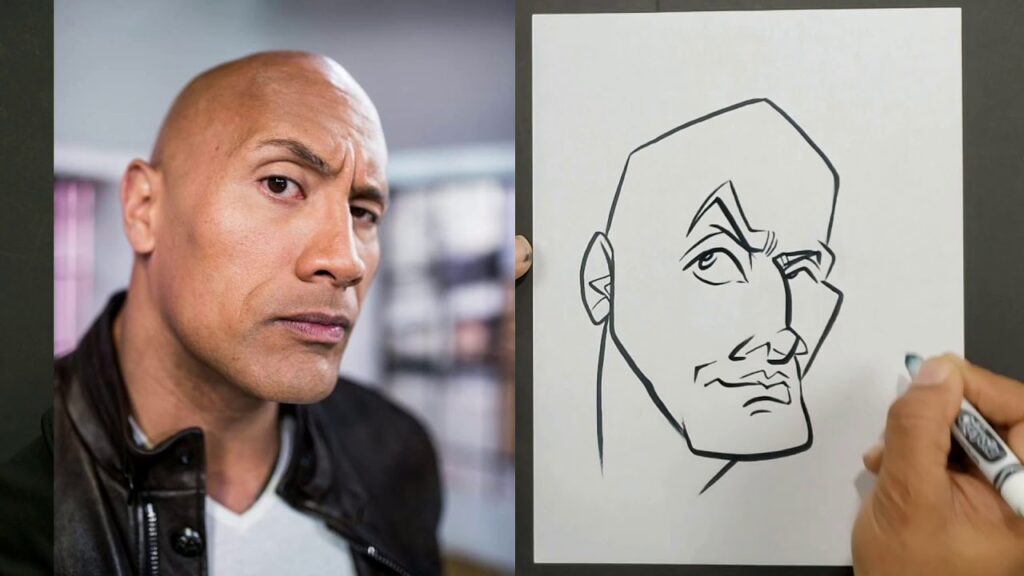Caricature is a form of art that merges humor, satire, and exaggeration to portray people, objects, or situations in a visually engaging and often comedic manner. Although it is most commonly associated with cartoons of political figures or celebrities, caricature spans centuries and cultures and has influenced not only visual arts but also literature and performance.
This article explores the history, techniques, uses, and cultural impact of caricature, providing a comprehensive understanding of this unique artistic expression.
What Is Caricature?
At its core, a caricature is a rendered image that exaggerates certain features or characteristics of its subject to create a comic or grotesque effect. These exaggerations can involve physical traits—like an oversized nose, elongated chin, or bulging eyes—or personality traits, such as arrogance, vanity, or foolishness. The goal of caricature is not to mock blindly but to highlight what is most recognizable or symbolic about a person or subject.
There are two main types of caricatures:
- Physical Caricature: Focuses on the exaggerated visual elements of the subject.
- Political or Satirical Caricature: Uses distortion to make a critical or humorous commentary, often on societal or political issues.
Historical Origins of Caricature
The word “caricature” comes from the Italian “caricare,” meaning “to load” or “to exaggerate.” The practice itself can be traced back to ancient times.
Early Examples
- Ancient Egypt and Greece: Mural paintings and pottery sometimes depicted rulers and gods with distorted proportions for symbolic reasons.
- Roman Empire: Graffiti and sketches found in ruins like Pompeii show early forms of satirical illustration.
Renaissance and Baroque Eras
The real evolution of caricature began during the Renaissance in Italy. The Carracci brothers—Annibale and Agostino—are credited with creating caricature in its modern sense during the late 16th century. Their sketches exaggerated facial expressions and physical forms to humorous effect.
18th and 19th Centuries
This era witnessed the rise of caricature as a tool for political commentary, especially in England and France. Notable artists include:

- James Gillray (UK): Known for his sharp satirical etchings lampooning political figures such as Napoleon and King George III.
- Honoré Daumier (France): Used caricature to critique social inequality and government oppression.
Caricature became a regular feature in newspapers and magazines, paving the way for modern editorial cartoons.
Caricature in the Modern Age
With the invention of printing and later photography, caricature found new platforms. In the 20th and 21st centuries, caricature evolved further, entering the domains of:
- Editorial Cartoons: Regular features in newspapers worldwide, often targeting politicians and social trends.
- Digital Art and Memes: Modern caricature often blends traditional drawing with digital editing and humor formats like internet memes.
- Caricature Artists at Events: Live artists sketch quick caricatures at parties, fairs, and tourist spots, creating personalized souvenirs.
Today, caricatures are also part of marketing campaigns, personalized gifts, social media avatars, and satirical commentary on global events.
Techniques Used in Caricature Drawing
Creating a compelling caricature requires a blend of technical skill and creative observation. Artists must identify the most recognizable features of a person and amplify them without losing likeness.
Here are key steps and techniques used by caricature artists:
1. Observation
The artist observes the subject’s physical traits and expressions. Common focus points include:
- Nose size and shape
- Eye spacing and angle
- Jawline
- Hairline and style
- Smile or mouth shape
2. Exaggeration
The chosen traits are amplified. For instance, if someone has big eyes and a tiny mouth, the artist might draw even larger eyes and a pinhole mouth for comedic effect.
3. Balance and Harmony
Even with exaggeration, the caricature should maintain facial balance to keep the subject recognizable. Over-exaggeration can distort the likeness beyond recognition.
4. Stylization
Artists develop their own unique styles—ranging from cartoonish to hyper-realistic. Some use crosshatching for shading, while others prefer clean digital lines.
5. Media
Caricatures can be created using various tools:
- Pencil or ink on paper
- Watercolor or acrylic paint
- Digital tools like Photoshop, Procreate, or Adobe Illustrator
Political Caricature and Satire
Political caricature is perhaps the most impactful branch of the genre. It uses humor to question authority, highlight injustice, and provoke thought. By simplifying complex issues into one powerful image, it becomes an accessible form of critique.
Notable Examples
- Thomas Nast (USA): Helped bring down the corrupt Tammany Hall political machine in the 1870s with his relentless cartoons.
- David Low (UK): Criticized appeasement policies during WWII and mocked Adolf Hitler and other fascist leaders.
- Modern Cartoonists: Artists like Herblock, Steve Bell, and Gado have continued the tradition globally.
These works often face censorship or backlash due to their bold messages, yet they remain essential tools for a healthy democracy.

Cultural Impact and Significance
Caricatures are not just for laughs; they hold cultural, political, and educational importance.
1. Social Commentary
Caricature is a visual shorthand for public sentiment. It can highlight societal absurdities, political corruption, or cultural hypocrisies more effectively than long-form writing.
2. Education
Educators use caricature to simplify complex historical or scientific figures, making them more engaging for younger audiences.
3. Pop Culture
From TV shows like The Simpsons and Family Guy to caricature-themed comics and merchandise, the influence of caricature permeates global entertainment.
4. Free Speech and Resistance
In many countries, caricature has become a symbol of resistance against authoritarian regimes. Artists often risk arrest or censorship for publishing critical illustrations.
Caricature in Digital Era
With the rise of AI and mobile apps, caricature has become more accessible than ever. Tools now allow users to turn photos into caricatures with a single click, opening new doors for amateur and professional artists alike.
Some popular applications and tools include:
- ToonMe
- Cartoonify
- Photo Lab
- AI caricature filters on social media platforms
These tools democratize the art form, although critics argue that they sometimes dilute the creativity and thought process involved in traditional caricature.
Controversies and Ethical Concerns
While caricature is rooted in humor, it can cross the line into offensiveness or perpetuate stereotypes.
1. Racial and Ethnic Stereotyping
In the past, caricatures have been used to mock marginalized groups, reinforcing harmful imagery. Modern audiences are more sensitive to these issues, and many publications now follow ethical guidelines.
2. Political Sensitivities
Caricatures that target religious figures, national leaders, or cultural symbols can spark international controversies—as seen in the Charlie Hebdo case in France.
Artists and publishers must balance freedom of expression with cultural sensitivity and ethical responsibility.
Conclusion
Caricature is far more than just funny faces. It is an art form with a deep-rooted history, evolving techniques, and a powerful voice in public discourse. From ancient murals to digital memes, caricature continues to thrive as a mirror to society’s quirks, flaws, and contradictions.
Its unique blend of art, humor, and social commentary makes caricature an enduring and impactful mode of communication. As technology continues to evolve, so too will the art of caricature—keeping us laughing, thinking, and reflecting on the world around us.
FAQs
Q1. What makes a good caricature?
A good caricature exaggerates key traits while maintaining a recognizable likeness and often includes humor or commentary.
Q2. Are caricatures always meant to be funny?
Not necessarily. While humor is common, caricatures can also be serious or critical, especially in political and social contexts.
Q3. Can anyone learn to draw caricatures?
Yes, with practice, observation skills, and some artistic training, anyone can learn the basics of caricature drawing.
Q4. Where can I get a caricature of myself?
You can hire a street or event artist, commission a digital artist online, or use caricature apps and AI tools.
Q5. Is caricature art or satire?
Caricature can be both—it is a form of visual art often used for satirical purposes.




Leave a Reply